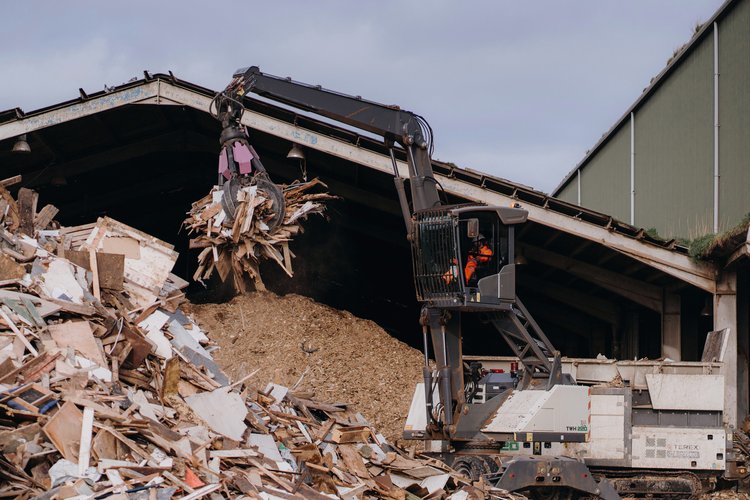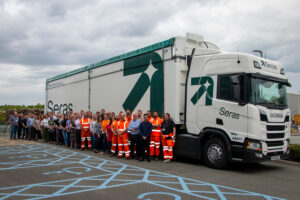Biomass waste wood has a crucial role to play in delivering our energy security and clean power goals by 2030 and beyond. Whilst the sector is delivering base load energy today, emerging technologies such as Bioenergy Carbon Capture and Storage (BECCS), make the industry’s future even more exciting.
Here’s our summary of the UK’s biomass waste wood sector and its 2025 outlook.
Overview
The UK’s waste wood market is performing better than ever with high demand for waste wood in the UK placing the sector in a strong position. When the wind doesn’t blow and the sun doesn’t shine, biomass is a reliable and consistent source of renewable energy.
- The UK waste wood sector and its end markets employ 10,850 people and is worth £2.1 billion per year.
- Over 2.7 million tonnes of processed waste wood is sent to UK biomass fuel facilities every year.
- The waste wood biomass sector makes a significant contribution to UK energy security, accounting for 1% of annual UK power consumption, enough power for 840,000 households.
- In 2023 biomass made up 5% of the UK’s energy mix, second only to wind.
- 2023 was a record year for the sector with 4.408 million tonnes – over 97% – of UK waste wood processed.
Carbon savings
Independently verified figures from the Wood Recyclers’ Association (WRA) showed that the UK’s waste wood biomass plants saved 701,000 tonnes of CO2e in 2023, when compared to the likely displaced energy generation. If these plants were fitted with Carbon Capture and Storage (CCS) technology, this could rise to an impressive 3.6 million tonnes.
Negative emissions
With the advent of emerging technologies and markets waste wood biomass could have a very promising future. BECCS is the most scalable Negative Emissions Technology (NET) on the market, delivering critical negative emissions while also generating electricity.
The policy landscape
The Clean Power 2030 plan has set out a clear pathway for the UK’s energy transition.
However, uncertainty for the biomass waste wood sector remains. With Renewable Obligation Certificates (ROCs) coming to an end, many biomass power plants are facing an uncertain future.
The Government has announced support for large-scale biomass plants to transition to carbon capture and storage technology – but excluded smaller-scale biomass plants, such as those fuelled by waste wood. The Wood Recyclers Association has called on the Government to also support smaller scale biomass facilities which are ready to transition now with access to approved Greenhouse Gas Removal projects. Transitional support mechanisms are needed for the industry to avoid a potential three million tonnes of waste wood ending up in landfill or being exported.
The Climate Change Committee’s Seventh Carbon Budget has emphasised the reliability of domestically sourced waste wood which will account for 15% of UK domestic bioenergy supply by 2050. It also recognised the leading role that BECCs will play in the UK’s net zero pathway.
The Government has also pledged to explore several options to achieve the near elimination of biodegradable waste to landfill by 2040.
Advanced Sustainable Fuels and industrial decarbonisation
The role of biomass fuel feedstocks will change over the coming years. This was reflected in the recent signing of the Sustainable Aviation Fuels Mandate, providing momentum to this new sector.
Advanced sustainable fuels will play a key role in supporting the decarbonisation of hard to abate sectors such as aviation and the steel industry. There are many exciting developments in this field including the development of green molecules.
BECCS will be particularly crucial for hard-to-decarbonise sectors, where carbon removals are the only viable option for meeting net zero.





